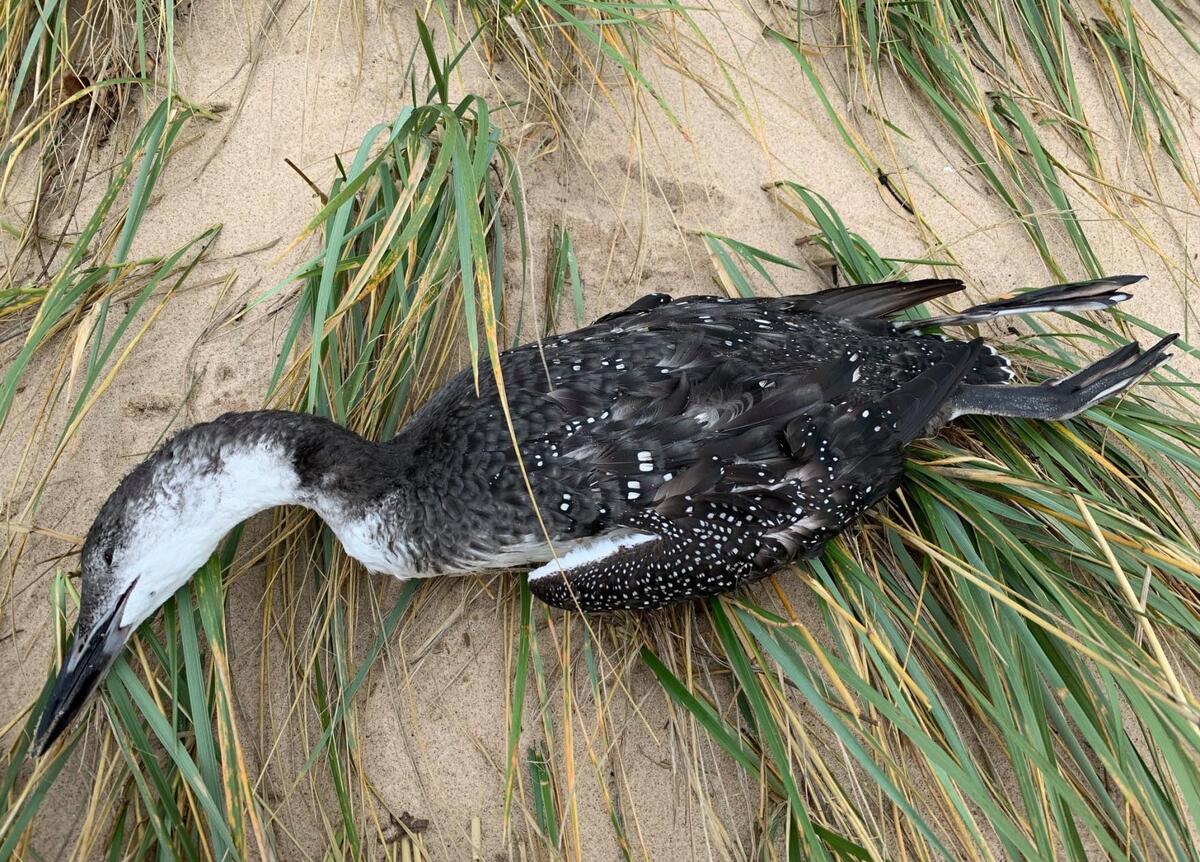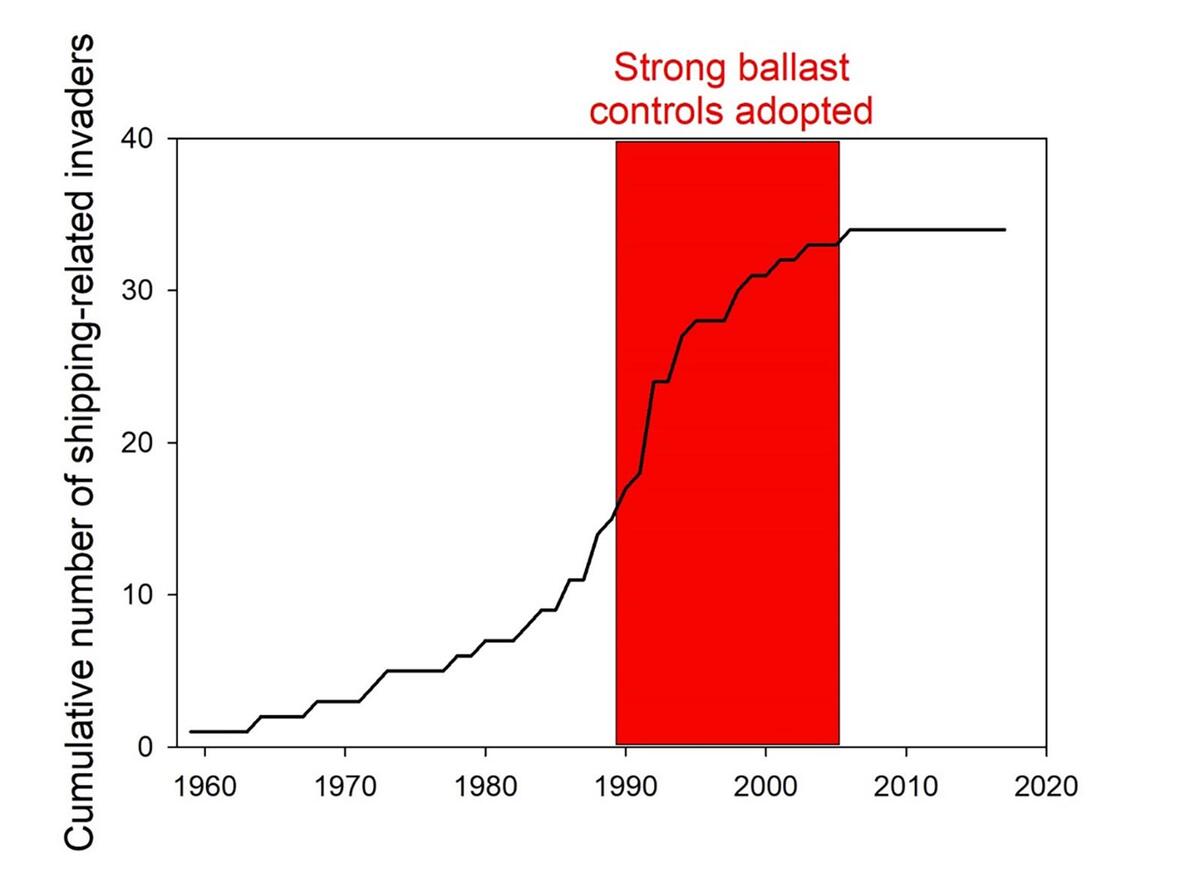
Global S&T Development Trend Analysis Platform of Resources and Environment
| Invasive gobies in the Hudson River | |
| admin | |
| 2021-08-31 | |
| 发布年 | 2021 |
| 语种 | 英语 |
| 国家 | 美国 |
| 领域 | 资源环境 |
| 正文(英文) |
The news that round gobies were just found in the Hudson River raises questions about how these invaders will change the Hudson ecosystem. It also reminds us that weak policies on invasive species needlessly risk the future of our natural resources. The round goby is a small fish from southeastern Europe that was carried into the Great Lakes in untreated ballast water of an ocean-going ship. Since its first appearance in 1990, it has spread through the Great Lakes basin and into the Illinois River. It can be abundant, especially in the rocky shallows, where populations may exceed 1 per square foot. Round gobies have wide-ranging ecological impacts in the Great Lakes. They force out small native fishes like sculpins and darters, and eat eggs and young of many fish species. In turn, many predators eat gobies. In some cases, this benefits the predators, resulting in faster growth rates for smallmouth bass, and more and bigger water snakes (something I know you’re looking forwa¬¬rd to!). Gobies also are expert bait-stealers, and are the bane of anglers along Great Lakes shorelines.  Round gobies eat a lot of zebra and quagga mussels, but they reduce populations of these mussels only in a few places. However, by eating mussels, round gobies move pollutants and poisons up the food chain. This has led to the death of thousands of loons and other waterbirds that wash up on beaches in the Great Lakes, the victims of botulism toxin moved up from mussels to gobies to waterbirds. Despite what we know about gobies from the Great Lakes and elsewhere, we can’t predict precisely how they will change the Hudson’s ecosystem. The effects of invasive species can vary enormously from one ecosystem to the next. To begin with, we don’t know how many gobies will eventually live in the Hudson. Will there be a large population because the Hudson has so many rocky shores (prime goby habitat), or a small population because those rocky shores are filled with predators like eels, smallmouth bass, and cormorants (all of which will happily eat gobies)? If there is a large goby population, will it reduce the massive zebra mussel population in the Hudson? If it does, this will change almost every part of the Hudson’s ecosystem. Will gobies benefit the Hudson’s sturgeons (Great Lakes sturgeons treat gobies as choice prey)? Or will they eat so many sturgeon eggs that they reverse the recent recovery of these endangered fish in the Hudson? Scientists can make educated guesses about these effects, but we will have to wait and see for a definitive answer.  The careless practices that allowed gobies and other invaders to reach the Hudson are well known, but have not been adequately controlled. Round gobies came to the Great Lakes in untreated ballast water. Imports of ballast water from overseas into the Great Lakes have now been effectively controlled, leading to a dramatic decline in the number of invasive species being brought into the Great Lakes (see figure). Species invasions can be controlled by good policy. However, large volumes of untreated ballast water are still arriving in American ports outside of the Great Lakes (more than 3 billion gallons from overseas in 2019, and more than 100 times that much from other American ports, according to the National Ballast Information Clearinghouse). And ships traveling within the Great Lakes are still allowed to release untreated ballast water, which almost certainly accelerated the movement of gobies (and other invaders) through the Great Lakes. Gobies then moved from the Great Lakes into the Hudson through the Erie Canal (and into the Illinois River through the Chicago Sanitary and Ship Canal). We have known for a long time that canals are highways for invasive species, but have been slow to install barriers or deterrents along canals to slow invasive species. The “Reimagine the Canals” initiative here in New York is a great opportunity to redesign the Erie Canal to block invasive species while retaining and enhancing core canal functions. We missed the chance to keep gobies bottled up in the Great Lakes, but barriers on the canal could stop or slow the arrival of even more damaging invaders (e.g., grass carp, bighead carp, silver carp) into the Hudson. Although they probably weren’t part of the goby story, other pathways known to bring us harmful invasive species (e.g., the pet trade, the live plant trade, inadequately treated wooden packing materials) remain poorly controlled at best. The DEC press release on gobies tells us to brace for possible changes in the Hudson, and reminds us of policy gaps that allowed these fish into the Hudson. Unless we want to keep seeing disheartening press releases about new invaders, we need to close these gaps. The Great Lakes ballast water example shows that targeted policies can be effective, if we have the political will to apply them. Let’s find that will. |
| URL | 查看原文 |
| 来源平台 | Cary Institute of Ecosystem Studies |
| 文献类型 | 新闻 |
| 条目标识符 | http://119.78.100.173/C666/handle/2XK7JSWQ/337324 |
| 专题 | 资源环境科学 |
| 推荐引用方式 GB/T 7714 | admin. Invasive gobies in the Hudson River. 2021. |
| 条目包含的文件 | 条目无相关文件。 | |||||
| 个性服务 |
| 推荐该条目 |
| 保存到收藏夹 |
| 查看访问统计 |
| 导出为Endnote文件 |
| 谷歌学术 |
| 谷歌学术中相似的文章 |
| [admin]的文章 |
| 百度学术 |
| 百度学术中相似的文章 |
| [admin]的文章 |
| 必应学术 |
| 必应学术中相似的文章 |
| [admin]的文章 |
| 相关权益政策 |
| 暂无数据 |
| 收藏/分享 |
除非特别说明,本系统中所有内容都受版权保护,并保留所有权利。
修改评论